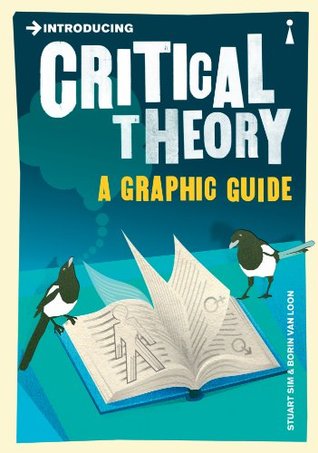More on this book
Kindle Notes & Highlights
by
Stuart Sim
Read between
August 16 - August 20, 2020
Being critical is being political: it represents an intervention into a much wider debate than the aesthetic alone, and that is surely something to be encouraged.
Alienation is a process by which mind – as the consciousness of a subject (thesis) – becomes an object of thought for itself (antithesis). And thereby the human mind constantly progresses to the next higher stage of synthesis and self-consciousness.
History is the journey of the “World Spirit” in its progress through a series of stages until it reaches the highest form of self-realization, Absolute Spirit.
Hegel’s dialectic is idealist. Marx gave it a materialist foundation, that is, he shifted alienation away from “mind contemplating itself” to the class struggle as the real history of consciousness in progress.
What ideology is literally based on is the economic infrastructure – the means by which it produces itself, its wealth, and who owns those means of production.
Lukács’s History and Class Consciousness (1923) preached a more humanist approach to class struggle, in comparison to the authoritarian Soviet Union model. Unlike many Soviet thinkers of the time, Lukács did not believe in the “inevitability” of revolution – it had to be consciously striven for through the combined efforts of the working class and the Communist Party in a creative rather than a dogmatic manner.
Gramsci rejected the crude deterministic notion that the exploited working classes must inevitably recognize revolution as “in their best interests”. Marxism had failed to consider how ideology actually works to make itself unrecognizable as such (another “disguise”). This is the trick of hegemony …
Viktor Shklovsky (1893–1984) contributed the concept of “defamiliarization” to his analysis of literary language – the “making strange” of everyday events and objects so that they appear to us in a new light.
Bakhtin saw novels as intensely “intertextual” – a concept further developed by the structuralist-feminist theorist Julia Kristeva. Novels are not independent unitary creations, but products that rely on “intertextuality”, that is, on references to an entire complex web of past and present discourses within their culture.
Bakhtin identifies a similarly disruptive influence within the institution of the carnival, with its love of uncontrolled parody, whereby socio-political authority is mercilessly mocked and “made strange”. The wildly satirical work of Rabelais (1494–1553) is for Bakhtin a prime example of this carnivalesque approach to authority (sadly lacking in the Socialist Realist enterprise).
Marxian dialectics and Freudian psychoanalysis equally emphasize a hidden agenda beneath our surface dimension – things are not what they seem. Critical theory follows them in attempting to tease out that agenda. Freud posits a discrepancy between our conscious “surface life” and the unconscious depth which is the unseen, unacknowledged controlling force. “Drives” at an instinctual level dictate much of what we say and do at a conscious level. Dreams, sexual abnormalities, neurotic pathologies will break through the disguises of conscious normality. Drives may be frustrated or displaced for a
...more
Structuralism has its origin in the linguistic theory of Ferdinand de Saussure (1857–1913). Saussure aimed to reveal the universal structure of language as a constructed system of rules. His key idea is the relation of the signifier to the signified. The connection between the linguistic signifier c/a/t/ and the signified concept “cat” is entirely arbitrary.
The novel Jane Eyre (1847) by Charlotte Brontë (1816–55) does not set out to be a discourse on the power of patriarchy, but the “madwoman in the attic” motif starkly reveals it nonetheless.
It is often remarked that “knowledge is power”, but we might just as easily say that “theory is power” too, once you know your way around it.
In that sense, critical theory helps to promote the cause of democratic pluralism, and is therefore an integral part of the current political scene. Theory is power. This is not merely an academic exercise for “intellectual mandarins”, but a perspective on awareness and a talent well worth developing for all of us.


